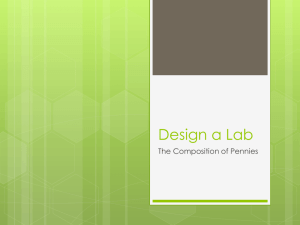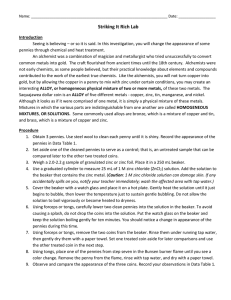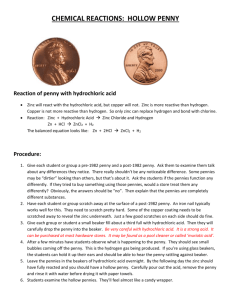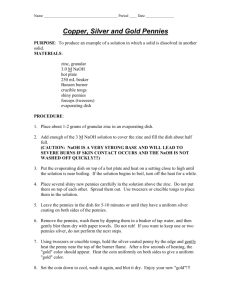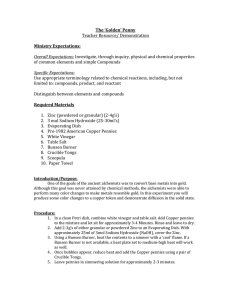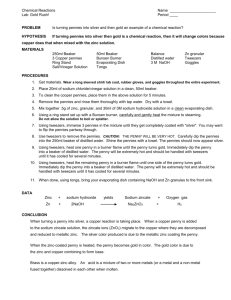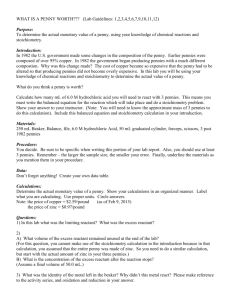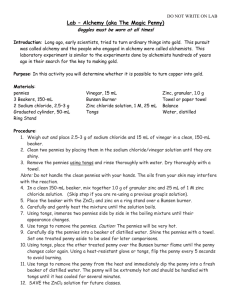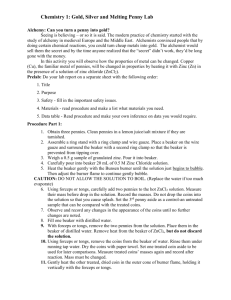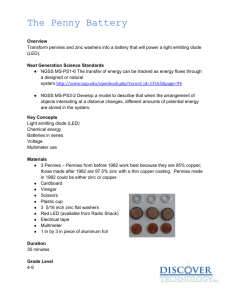The Golden Penny
advertisement
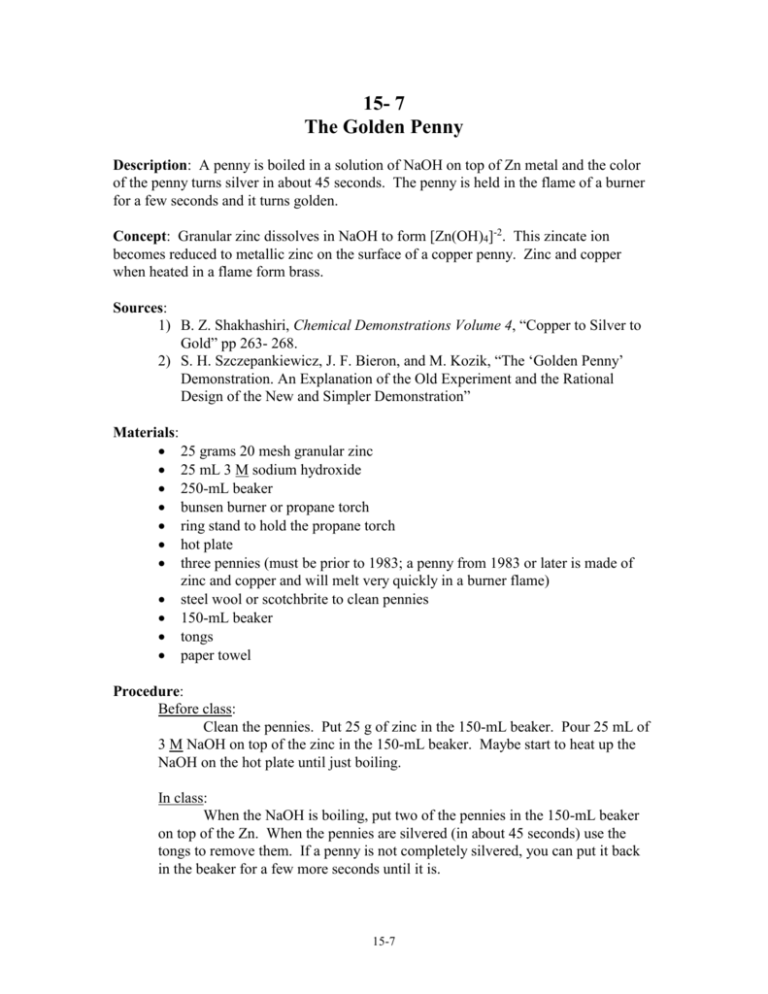
15- 7 The Golden Penny Description: A penny is boiled in a solution of NaOH on top of Zn metal and the color of the penny turns silver in about 45 seconds. The penny is held in the flame of a burner for a few seconds and it turns golden. Concept: Granular zinc dissolves in NaOH to form [Zn(OH)4]-2. This zincate ion becomes reduced to metallic zinc on the surface of a copper penny. Zinc and copper when heated in a flame form brass. Sources: 1) B. Z. Shakhashiri, Chemical Demonstrations Volume 4, “Copper to Silver to Gold” pp 263- 268. 2) S. H. Szczepankiewicz, J. F. Bieron, and M. Kozik, “The ‘Golden Penny’ Demonstration. An Explanation of the Old Experiment and the Rational Design of the New and Simpler Demonstration” Materials: 25 grams 20 mesh granular zinc 25 mL 3 M sodium hydroxide 250-mL beaker bunsen burner or propane torch ring stand to hold the propane torch hot plate three pennies (must be prior to 1983; a penny from 1983 or later is made of zinc and copper and will melt very quickly in a burner flame) steel wool or scotchbrite to clean pennies 150-mL beaker tongs paper towel Procedure: Before class: Clean the pennies. Put 25 g of zinc in the 150-mL beaker. Pour 25 mL of 3 M NaOH on top of the zinc in the 150-mL beaker. Maybe start to heat up the NaOH on the hot plate until just boiling. In class: When the NaOH is boiling, put two of the pennies in the 150-mL beaker on top of the Zn. When the pennies are silvered (in about 45 seconds) use the tongs to remove them. If a penny is not completely silvered, you can put it back in the beaker for a few more seconds until it is. 15-7 Dunk the silvered pennies in the rinse water and then dry with a paper towel. Hold one of the pennies in the flame of a burner until it turns to a gold color (in about 5 seconds). If the penny is held in the flame too long, it will lose its gold color and will look copper again. Compare the copper, silvered, and golden pennies. Safety: The boiling sodium hydroxide (NaOH) is extremely caustic. Take care to not breath in any fumes from this boiling solution. Reduce the heat so that the solution does not boil too vigorously. Clean-up: The sodium hydroxide solution can be decanted and saved to be reused for this demonstration or rinsed down the drain. The zinc should be rinsed well with distilled water and allowed to dry in the air. It also can be reused for this demonstration. Notes: A summary of the Szczepankiewicz, Bieron, Kozik paper: In this demonstration the first step is to dissolve zinc in sodium hydroxide which will happen as the result of 0.4 V of “driving force”. [Zn(OH)4]2- + 2e- Zn + 4OHE = -1.23 V 2 H2O + 2e H2 + 2 OH E = -0.83 V Zn + 2OH- +2H2O [Zn(OH)4]-2 + H2 Erxn = 0.4 V The second step is to reduce the [Zn(OH)4]2- ions to zinc metal on the copper surface of the penny. It is thought that the reducing agent in this process is zinc itself and “that the driving force is related to the difference in the reduction potentials of zincate ion on different surfaaces due to low-temperature alloy formation.” The third step is the production of the brass alloy by heating the zinc coated copper penny. 15-7
